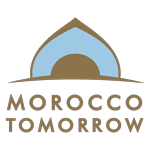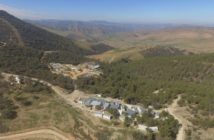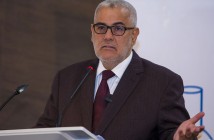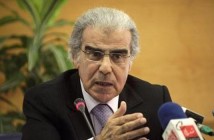London / Morocco Board News– It was under the watch of the government of Abbas Fassi that a New or a completely revamped constitution emerged out of the blue precipitated by the ‘Arab Spring’ and considered revolutionary by some and more of the same by others. It was put to a referendum on 1 July 2011 and was accepted by 98% of the 74% of the people who made it to the ballot box. This kind of results might seem bizarre to us in West, but Arabs and Muslims always claim their singularity and uniqueness from the outside world as they fail to see the other.
However, this apart, the most important innovative change made is that of the role of the Prime Minister, who becomes the President of Government and is given to the party with majority votes at elections, a great improvement of the previous ones, bringing this nomination in line to what is generally recognized as one of the principles of democracy. In other words, now the king can no longer choose any prime minster as it used to be the case, but must respect the will of the people through elections and name the new president of the government from the party that received the most votes.
The king will no longer participate in or preside over the meetings of the cabinet. Rather, it is incumbent on the president of the government now to over this function in the renamed Council of Government. However, the king still, under special cases, presides over the cabinet, which in that instance is still called the Council of Ministers, when security issues or strategic policy decisions are at stake. The royal cabinet still has its staff intact forming the shadow cabinet, the think-tank and the executive, especially in relation to the allocated Hassan II funds. In addition, the king still kept control of three major areas of power, namely religious affairs, which might be similar to the Queen of England as the Head of the Church and moving towards all faiths, which Prince Charles has been promoting for years, security issues and strategic major policy choices, which remain feudal and more of the same.
The king will remain the supreme commander of the armed forces and arbiter among political parties, as prescribed in Title III, article 42 of the new constitution describing him as a “Head of State…supreme arbiter that transcends political partisanship, upholds the nation’s democratic choices, and guarantees the adequacy of constitutional institutions.” This again is no different than the powers given to the French president, but he is an elected President and not of divine right. The other major renovation is the second preamble stating that “[Morocco is] a sovereign Muslim State, committed to the ideals of openness, moderation, tolerance and dialogue to foster mutual understanding among all civilizations; A Nation whose unity is based on the fully endorsed diversity of its constituents: Arabic, Amazigh, Hassani, Sub-Saharan, African, Andalusian, Jewish and Mediterranean components.”
This is considered as another major change giving recognition to a new type of Moroccan identity based on its historical reality. Important is also Article 3, which guarantees freedom of religious practices to all faiths, but no reference to non-faith or shari’a law, the inclusion of the latter is found in most Arab and Muslim states’ constitutions, bearing in mind the latest declaration from Libya’s CNT, after the death of Gaddafi. Certainly the new constitution broadens the power of parliament, allowing it to pass laws on most issues, but very little on ‘La Muette’ military spending or Hassan II Funds; it takes steps towards protecting the independence of the judiciary, as the constitution states in Article 107 that: “The judiciary power is independent from the legislative power and from the executive power. The King is the guarantor of the independence of the judiciary power”.
It remains to be seen how the judiciary implement its independence and whether it will lead to more corruption or promote the respect of the law and implement justice, as it should be in a democratic state. At the end of the day it is for the Moroccans to interpret and claim their rights, irrespective of the wishes of political parties, religious fanatics or any other. It is up to the people to use their sound judgement and have an open mind that reflects the demands of the present and not the rhetoric of the past. It is true that mentalities have to change and accept that religious discourse is the privilege of the Mosque or in the private home and not in the street or in politics, above all it has to remain an individual’s choice not imposed by anyone on anyone, only then that progress to democracy might take hold in the country. The Vatican rules what is God’s, Berlusconi rules what is Italian, or at least until his resignation, nothing and no one lasts forever.
As new legislative elections based on the new constitution were set for 25 November 2011 and new coalitions started to take shape. Three distinct formations emerged, namely the traditional “Kutla Alliance” which existed in one form or another since the 1970s, the newly created “Alliance for Democrats” (APD) and the new innovation of a third way of the Social Democratic Movement (MDS). The first to go into action are the ‘cocotte minute’ parties who have re-emerged, in force to combat not only the PJD, but also Kutla and all other parties, on 25 November 2011 elections under its a new ADP coalition group, bringing the old king’s or rather Palace Secretariat’s parties to the forth with some outsiders in the middle, which might diminish further their credibility and lack of ideology. They are the RNI headed by the charismatic and ambitious economist Salaheddine Mezouar, PAM headed by Mohammed Cheikh Biadillah and its founder Fouad Ali Himma., the UC, the MP, the Islamist Party of Renaissance and Virtue (PRV), one wonders where that virtue comes from, the Labour Party (PT), the Socialist Party (PS) and the Green Left Party, I wonder how many people can understand this Harira mix, when the Moroccans, I believe, are looking for “political credibility within parties, democracy, transparency and innovative and challenging manifestoes”. It is quite normal for the first four to claim legitimacy as most of them have something in common and all represent the traditional Palace Parties that emerged since independence. They almost all went to the Royal College and their political career started within the king’s Palace secretariat (Cabinet du Roi), as administrators and not politicians, as they are or were also the kings’ closest friends from the school days, whether under Hassan II or Mohammed VI.
They became the king’s party, whether the King wanted it or not. If the MP has always been known as an Amazigh royalist party, there remains a big question mark on what common ground the other parties have in common with the other five, other than power and rubbing shoulder to shoulder with the big fish. Nevertheless, in their high-speed joint manifesto they claim to base their campaign on three ‘realistic and achievable aims’, mainly to restore confidence and reconcile the public with the country’s political institutions, a political jargon that makes political action meaningless; second, they hope to restore people’s dignity, which was abused in the first place by the existing system, by bring about real equality between men and women and between urban and rural areas, fight poverty, vulnerability and all forms of social exclusion, provide job security, a claim which is also made by other parties and has always been the favorite during election campaigns; and finally, the emphasis on creating 200,000 jobs per year for young people and another 500 for the self-employed, which again reflects the promises of the others, as well as being already part of the Moroccan planning and which Mr. Mezouar knows very well. For certain, the programs of the three ‘Alliances’ are closely matched.
So, there is nothing new or innovative and they hardly differ from each other’s claims and the National plan. Furthermore, they do not tackle the real problems of education, the health service and the introduction, nationwide, of a social security system that is worth having and available to all, rather than going back to the still born second rate system of less than dignified RAMED, instead of moving on to a system that covers all the people without distinction or stigmatisation of being labelled “poor or démunis”, when the only “démunis” or “poor” is an inefficient and incompetent government that cannot take care of the people it was meant to protect and serve. The Moroccans have their dignity and should not be reduced to charity and collecting certificates to prove that they are useless when they are prepared to work and provide the wealth for a small group of individuals whether from within or foreign.
Furthermore, the APD proposes to promote an industrial base (their favourite and chasse gardée) and to support the SMEs and promote export as well as public investments and the preservation of macro-economic equilibrium with a 6% growth with a controlled inflation not exceeding 3%, as well as keeping public debt at 50% of the GDP with a predicted increase of 15% in export, something which Mr Mezouar was already promoting within the outgoing government. It also proposes 99% coverage of schooling for 6 to 11 year olds by 2016 (when Youssefi (USEFP) already claimed 100% coverage by 2003) and 90% for 12 to 14. It also promises to have a global medical cover and one doctor per 2000 inhabitants (not checking the health ministry’s figures which are already around 2,000), and provide rural health centers for each 5,000 inhabitants as well as create 5 new medical hospitals (CHU), a project which was put into action under T’Hami Khyari when he was Health Minister under Youssefi.
They also promise to limit the cost of social housing to 5,000 dirham per m2, which Hjira recently alluded to, as well as the creation of a social solidarity fund to generalize medical insurance for the needy (RAMED), which is a useless scheme and should be scrapped and replaced by a general cover financed, in part, by Hassan II funds (FHDES) which are the citizens’ funds collected from Privatization, amounting to more than 35 billion dirhams since its inception, rather than squander the funds on wealthy companies like Valéo, Safran, Boeing, Fruit of the Loom and others. Morocco needs 20,000 more doctors to be at par with France with 296.7 inhabitants per doctor, or 10,000 more if to be anywhere near Algeria’s 884.9 or Tunisia’s 776, though the present government has already undertaken to train another 3,300 doctors a year till 2020, which would add another 29,700 doctors bringing them to a total of 46,700, cetrus parabus, to reach 749.47 inhabitant per doctor, and to be at par with present figures for Tunisia, but population will also increase and there still be a short fall to compare with the Maghreb neighbours let alone France or Europe. That is a challenge for all the parties, rather than cosmetic changes they are proposing.
Do the Left Parties fare any better? The simple answer is a small yes and a very big no, according to a scale of 1 to 10. A yes will be appropriate in keeping at least with their traditional composition and origin. The formation of all the three parties goes back to the nationalist movement and to Istiqlal Party, though the PPS goes back to the Communist Party after the cessation with the French Communist Party 1946, and from there that different splits occurred to move to the left of the Istiqlal traditional centre-right it adopted since its inception in 1934. The left, from the early years of independence responded to political formations, after Mohammed V signed the Charter on freedom of association in mid-November 1958, which was initiated by Si Bekkai, resulting in many associations and political parties emerging in order to participate in a new experience in democracy through the ballot box, as demonstrated by May 1960 first local elections in Morocco. Since then, many parties emerged and went through many changes, to the present USFP, the PPS hence the traditional Left coalition formations, keeping their link with the outsider insider half-brother you love at time and hate at another, the black sheep Istiqlal. However, there is still confusion about real parties emerging along political ideologies’ convictions, as time does not seem as ripe to create a Moroccan system of clear Left, Right and Centre divisions, but more of alliances of conveniences not dissimilar to Italy’s fiasco.
Kutla Alliance once again rejected the inclusion of the PJD within the alliance for the 2011 election campaign. Its program is not dissimilar to that of ADP and proposes a new social charter based on equity and progress, promoting a voluntary economic policy which puts the citizen at the heart of the development process (here again it is only a question of semantics rather difference between Kutla’s program and the APD), work for lasting development and the preservation of natural resources (you cannot have your cake and eat it), as well as promoting external relations at regional level (our dear Amazigh Maghreb Union), and above all build the citizens confidence to become involved and be able to confer with each other in a concerted effort to reach a consensus on set objectives to translate into a common political action.
Nevertheless, the Istiqlal is still closer to the Islamist PJD then its present socialist alliance, which would be only natural to have their own traditional conservative centre-right, as they are closer in their ideologies than with the democratic Left Kutla parties. It remains to be seen what happens to the Istiqal and whether it would rally with the Islamist PJD party to form a traditional conservative group in the near future, especially if the PJD performance provides any surprises, as Ennahda did in Tunisia. The PJD might still emerge as the first force at the 25 November 2011 elections, or it may remain a floating party and follow the wind of change that might sweep through the New House thereafter. The PJD’s campaign has come with figures in a simplified form that anyone can understand but not sure about their applications. It focuses on good governance, promises to fight corruption and keeping a stable growth in the economy at around 8%, a wishful thinking in a certain recession in Europe in 2012. It also promises to improve Morocco’s position within the Human Development index and to put Morocco within the first 90 countries, as opposed to present 102. It also promises to bring the illiteracy figures to 20% from present 30% by 2015 and to 10% by 2020 (a very slow process and a déjà vue within the ADP), as well as raising the minimum wage to 3,000 dirhams, when Tunisia’s is double that, and provide a pension of at least 1,500 dirhams as well as improve the child-mother healthcare. It hopes to achieve these goals by gathering support from the Reform and Unification Movement (MUR), which might be the next formation to include Istiqlal.
Finally, there is the new formation of “Centre Parties Alliance” which brings together the Social Democrat Movement (MDS), the Party Al Ahd Addimocrati Party and the Equity and Renewal Party. Their main aim is to mobilise the people to make the big projects outlined by the king in his speech of March 2010 a success and to satisfy the legitimate demands of the people’s basic needs. A dismal proposal if anything when young people are asking more innovative and challenging ideas to put them in the 21st century rather than mere subsistence Harira the “Centre Parties Alliance” is proposing. It is a mockery of democracy and parties like these should be disqualified and banned from running as candidates and are a disgrace to represent the people or the country. They have nothing to offer to the country or to the people, a reminiscent of the MP programs of 1960s to 1980s campaigns. It is an insult to the many protestors, who brought about this change, but again democracy is only a mirror reflexion of its people, so are the Moroccans really ready for it, or only the educated few who find themselves without jobs and without a future, in spite of years of hard work through their university education, that are fighting for it.
It seems that the programs as a whole do not prescribe anything which has not been already in existence at least since the government of Abederrahmane Youssefi, or within the present coalition government. Or the coalitions might say that our ideology is our common programme and as we cannot have one, we devised a plan of how to get to power or how to remain there, once with Kutla, now perhaps with APD, tomorrow may be with the PJD, as the Istiqlal is keeping its options open, but not how to change the status quo,’ it is not in our interest’. They might also say that Morocco is not yet ready for change, so they may think and they are quite prepared to take people for an easy ride, and would they or would the people let them? Only time will tell how this ménage à 8 or à 3, can develop and to what extent the Moroccans see this bedfellow mix contributing to their aspirations and to a new Moroccan democracy. In a democracy, it is left to everyone to choose and vote or not to for what he, she, thinks is the right thing for self and the country.
Whichever party formation that emerges the victor within these three historically distinct divisions, it has to take into consideration the demands emanating from the ‘Arab Spring’ when for the first time that Arab and Muslim countries’ youth shouted loud and clear their indignation to their leaders. Their voices were heard in the open expressing the importance of individual freedom of choice and challenging the old ideas with their growing demands for secularism, separating religion from politics, and urging the people to distinguish it from atheism on the one hand and also the right to choose on the other. The issue of equality between men and women, homosexuality, faith and non-faith are part of the general discourse amongst the young generation. The de-penalization of eating during Ramadan and the choice of religion, atheism or joining any other association or simply being indifferent, form part of their demands. The youth movement has gone beyond the discourse of polygamy which is very much restricted if not made impossible in Morocco’s Moudawana and rejected in Tunisia, Lebanon, Turkey and many other Muslim states. The right to abortion, as secured in Tunisia and Turkey, is very much under discussion in Morocco, spearheaded by most liberal thinking as well as the PJD Islamic party. Despite the ban and jail sentences imposed on abortionists, it is still tolerated in Morocco and practiced in hospitals and by back street ‘faiseuses d’anges’ performing some 200 abortions a day and between 600 and 800 are performed by doctors within Moroccan hospitals and clinics. So the new elections and the formation of the new government will either set the path for the future of Morocco with more democracy or pushed it to extremism and violence, which would be far worse than that now seen in Syria, or that experienced under the Poll Pot regime of Cambodia.
| [1] Moroccan publication, Maroc Portail, Integral Text of the new Moroccan Constitution, 2011. [2] The constitution also provides for corruption penalties of the two parties; the judge and the citizen or the attempt to bribe the judge. [3] PAM was founded by Fouad Ali el Hima, a close friend of Mohammed VI, on 8 August 2007 and was very successful at 2009 local elections.it was made up of 5 small parties: Parti al ahd, Parti de l’environnement et du developpement, l’Alliance des libertes et le Parti initiative citoyenne pour le developpement al moubadara. [4] The founder of the MP (Ahardane) is the exception as he went to a military school, but more royal than the royals themselves. [5] The first government in Morocco as the king’s Advisors have more power than the Prime Ministre, and were all the major decistions are taken and passed on to government to implement. [6] Youssefi, the Moroccan Prime Minister, declared in an interview that all children of school age will be able to attend school at the age of 6 and not 7 by the school year 2002-2003, and this for boys and girls in both rural and urban areas, RTM 24 February 2001. [7] This figure is already reached in 2010 with an average of 2059 inhabitants per doctor. See page 16 above. There are 17,000 doctors in Morocco over 35,000,000 inhabitants = 2058 inhabitants [8] This is also on ongoing reform announced in 2009 stating that 3,300 doctorsare to be qualified avery year to remedy present shortage. [9] Le Soir Echos [N°757, page 2, du 7/02/2011. [10] The 1958 document was amended in 1973 to reflect on new development in the country. [11] See PAM’s foundation |






